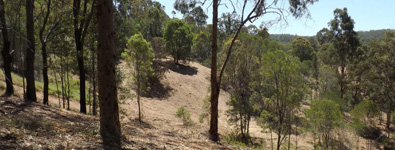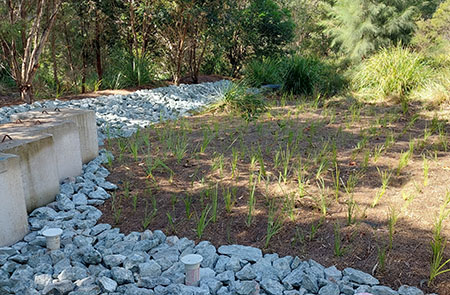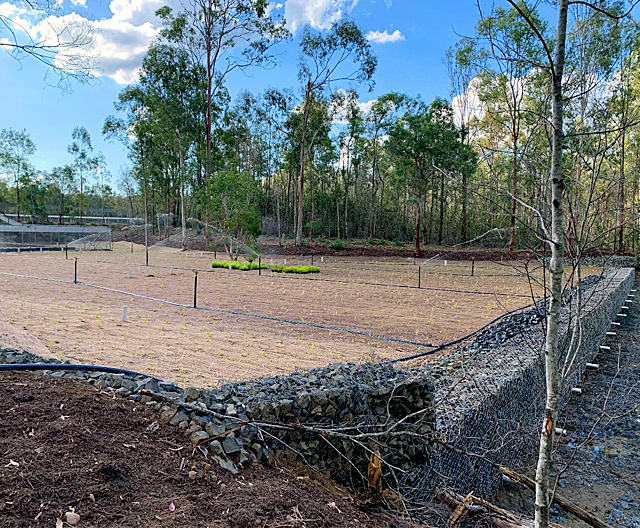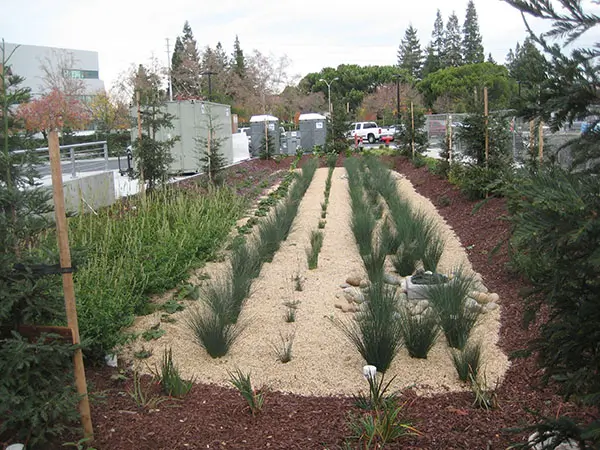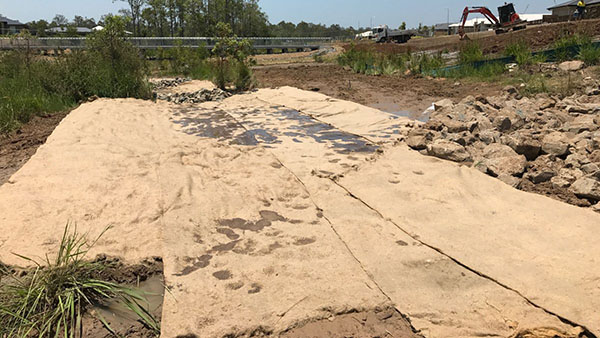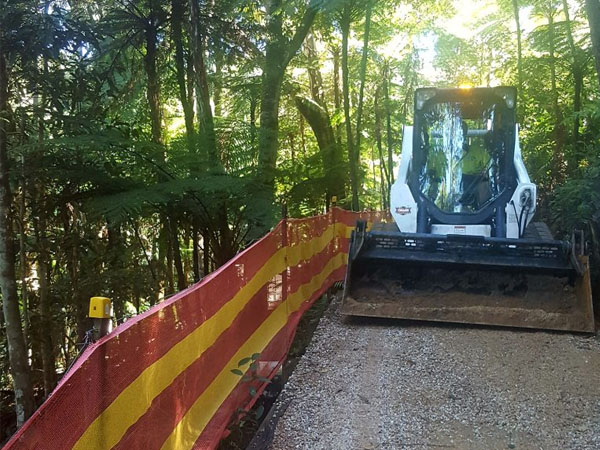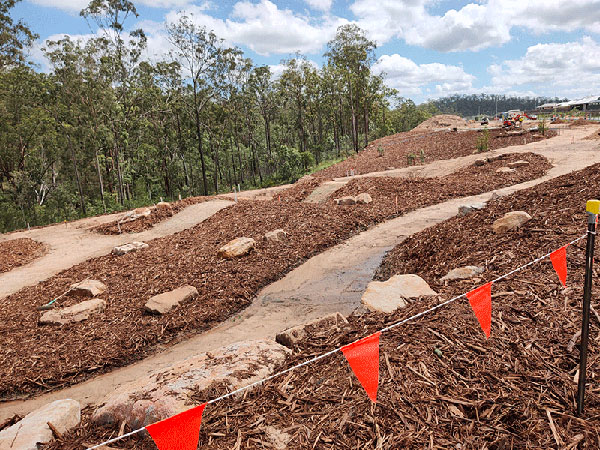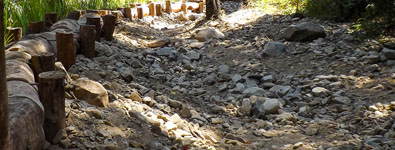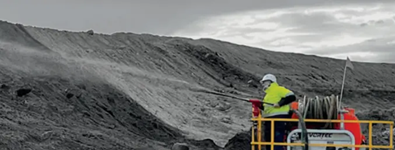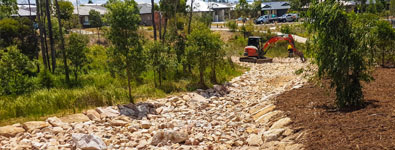YEARS EXPERIENCE
Complete Stormwater Solutions
Stormwater Management
Structural stormwater treatment systems, such as bioretention basins, are commonly implemented to support the water sensitive urban design initiative introduced by many councils around Australia. Urbanisation has a very clear impact on the natural water cycle and water tables. This impact includes changes to both stormwater quantity and quality.
With urbanisation comes an increased number of areas through which water cannot pass. Areas that were once natural vegetated land, become roofs, roads, carpaks or other paved surfaces.
- The impact of having a limited amount of areas through which water can flow results in:
- Increased amounts of stormwater runoff generated from urban catchments
- Hydrologic regime alterations
- Changes to geomorphology of groundwater movement
- Surface water flow leading to stream channel erosion
- Downstream sediment deposition and flooding
Add to this the levels of contaminants and pollutants that enter the waterways from residential, commercial and industrial land uses, the potential for irreversible environmental impacts is ripe.
That’s where storm water treatment solutions come in. They help to treat and filter pollutants from stormwater before they cause irreversible harm to local ecosystems.
Bioretention Basins
Bioretention basins are areas used to slow down and treat on-site stormwater runoff. They are generally landscaped areas designed as depressions or shallow basins which direct the flow of water.
Stormwater is directed to the basin before going through a drip feeding and filtration process. A number of physical, biological and chemical processes are used to slow the flow of the water while also cleaning it and filtering out any contaminants and pollutants.
Once the water is slowed and cleaned, it is allowed to infiltrate native soils or it is directed to nearby stormwater drains.
BIOBASINS COMPLETED
Bioretention Basin Installation & Construction
Studies have indicated that pollutant runoff increases substantially following the development of a site. Pollutants such as sediment, nutrients (primarily nitrogen and phosphorus), oil, grease and trace minerals are byproducts of development.
Bioretention areas are used to manage pollutant removal efficiency from development. That’s why designers can incorporate bioretention areas into the landscape to remove such pollutants from many sources.
Tab heading: Installation
[H3] Bioretention Basin Installation & Construction
Finding or creating the ideal location for a bio basin system is the most critical step in the construction and installation phase. The size of the drainage area will affect how many bioretention systems will be needed as too large an area can easily clog the filtration system of a smaller bio basin. Larger sites will need multiple systems installed.
The ideal installation site should have a slope less than 5-6% and must have sufficient space for water to effectively filter stormwater and allow it to flow into the stormwater drainage system. In order to function correctly, bioretention basins need to drain reasonably quickly and should not be installed in areas where there is continuous groundwater flow or flow from sump pumps.
When a bioretention system is first installed, the filter media is initially covered with geofabric and a layer of turf. This ensures that the precious filter media is not contaminated during housing construction in new estates.
The basin is generally completed once the construction of the new estate has reached approximately 90% completion.
With our team of experts and specialized equipment, we can assist with bio basin installation and construction under the instruction of an environmental service provider. Our equipment is rare and allows us to complete bioretention basin construction more efficiently.
Ask us about our tracked machines and how we can help you construct a bioretention system more safely and efficiently.
Bio Basin Design Considerations
Bio basin designs can vary widely due to site conditions, landscape limitations and the designer’s preferences. Successful bioretention basin design depends on many factors. Consultants must work closely with the landscape architecture and review the development site plans in great detail.
Good designers also consult frequently with on the ground teams responsible for maintaining the systems so that their designs can withstand the test of time.
At Total Environmental Concepts, we work closely with those involved in bio basin design and assist them with creating designs that will ensure success and cost-effectiveness for many years to come.
The most important design features for bio basins include:
- Pretreatment – Facilitates the removal of heavy sediments and pollutants in stormwater prior to entering the filter media. This reduces clogging of the filter and allows the asset to remain cost-effective by reducing the cost of maintenance.
- Treatment Areas – These should include a mulch layer above the engineered soil bed and a ponding area to store small water quantities temporarily while sediment drops and water flow is slowed down.
- Water Conveyance – Great designers should ensure that stormwater flows do not cause erosion at any stage before, during or after treatment. Additional conveyance recommendations would be to use an underdrain system to take water to the storm drain system. An overflow system is also helpful in times when rainfall and runoff levels are higher than the bio basin system can withstand.
- Maintenance Considerations – Easy access is essential to good design. As maintenance experts, we work with designers to ensure our staff and machines can easily and safely enter the bioretention area to complete maintenance safely and cost-effectively.
- Landscaping – Choosing the correct landscaping materials is critical to both the function and design of bio basins. Use native plants where possible and create an environment where they can thrive against invasive species.
Chat with our team if you need any tips on the best bioretention design practices that lower ongoing maintenance costs and ensure longevity.
Bioretention Basin Maintenance and Cleaning
With newly constructed bio basins, maintenance and repairs must be performed more regularly to ensure vegetation is establishing correctly and there are no filtration blockages occurring. Routine maintenance is suggested at least once before asset handover to the council and then regularly within the first two years after off maintenance.
Once the system becomes more established, routine maintenance is recommended within every 3-5 years. These inspections and maintenance will ensure the bio basins continue to function correctly.
Effective maintenance of a new asset includes watering plants daily for at least two weeks as well as:
- Re-mulching certain areas
- Mowing areas with turf or overgrown grass
- Assessing plant diseases and treating them
- Watering plants during drought periods
- If ponding of water lasts longer than 2 days, removing top layer and cleaning or replacing affected areas
On a monthly basis, it is advised that each basin is evaluated and maintained if any problems arise. Litter and plant debris will need to be removed an eroded areas repaired in order to ensure optimal function of the bio basin.
Once or twice a year it is also recommended that each basin is inspected for dead and diseased plants. Replanting of these will be needed. New mulch will also be needed in areas it has washed away or is not performing correctly. Tree stakes and wires will also need replacing from time to time, as needed.
Our team are experts at maintaining bioretention systems. Not only do we have years of solid industry experience behind us, we also have specialist equipment that allows us to be more cost-effective and offer safer operations.Our tracked machines add a level of safety no other machines can when operating in wet or difficult terrain as they protect against slipping and sliding. They also allow us to complete jobs faster than if we only relied on tyre bobcats and tippers.
Chat with our team today if you’re looking for a top team to maintain bio basins on your property. We work with developers, councils, landscapers and other environmental contractors.
Bioretention Basin Costs
Bioretention basins are not cheap. Construction costs for a basin range from $5,000 to $50,000 depending on the area it covers. The long term costs associated with maintenance and ensuring optimal performance are also worth considering as these are affected by the design and construction of the basin.
Good bio basin designers start with the end in mind and include some of the above suggestions to ensure the basin is built with longevity in mind. Taking shortcuts usually ends up in very high maintenance costs.
Exact costs will depend on your region and can vary due to the following factors:
- The existing landscape and the quality of the available soil on the site
- Land prices, bioretention systems use more land than other stormwater management practices usually would
- Council costs, licenses and permits required
- In the case of an early handover to council, there will be a cost additional to the bond given to council
- Design and construction costs
When considering the costs of bioretention systems, it helps to consider that the basin will most likely be landscaped in a traditional manner. Associated landscaping costs can, therefore, be treated separately to the cost of the construction of the basin.
Considering accessibility to the asset and other factors influencing long-term maintenance in advance could also save future costs. The bioretention basin maintenance should be on par to what a similar sized landscaped area would be if it is built and designed correctly. If there are accessibility or quality control issues, this could greatly impact the costs of ongoing bio basin maintenance.
How does bioretention work?
Bio basins and other systems capture rainwater and stormwater runoff and guide it through a filtration series before it flows into natural and sensitive waterways. Stomwater collects a number of contaminants and pollutants as it flows along pavements, roads, rooftops and other constructed areas.
As the runoff flows through a prepared soil medium, it is filtered. This soil medium consists of layers including a grass buffer strip, sand bed, ponding area, organic or mulch layer, planting soil and plants.
The runoff first passes over or through a sandbed which slows the water’s flow velocity and distributes the runoff evenly along the ponding area. When the water capacity of the basin is reached, stormwater begins to pool at the surface of the planting soil.
Excess water can be funneled either through:
- Infiltration into the subsoil (infiltration design)
- By the means of an underdrain (filter design)
- A combination of both infiltration and filter design
Elements of Bioretention Systems
Bioretention systems are normally made up of a number of elements.
- Grass buffer strip – Its purpose is to reduce runoff velocity and remove suspended solids.
- Vegetation – Help remove water and extra nutrients.
- Shallow pond areas – Store excess stormwater flows and helps settle sediments and other water pollutants.
- Mulch – Encourages the breakdown of petroleum based pollutants and hydrocarbons. It also helps reduce soil erosion and filters pollutants.
- Man-made soils – Support vegetation growth as well as nutrient uptake and water storage. Generally, engineered soils include a form of clay base to assist with the absorption of nutrients, hydrocarbons and heavy metals.
- Sand bed – Provides drainage and allows the planting soil to be aerated. It can also help flush out pollutants.
- Under-drains – Guides extra treated water to the stormwater drainage system or receiving waters.
Extended Detention
When stormwater enters a bioretention basin, it gathers over the surface of the filter media for a short time. It can gather up to a depth between 200-400mm.
By holding water through extended detention, flow velocities are more easily managed over the surface of the filter media. The overall volume of stormwater runoff that can be trateade is also increased. Extended detention, also referred to as ponding depth, is created by raising inlet pits (overflow pits).
Hydraulic Structures
- Also known as overflow pits, these structures exist for flooding and heavy rainfall events that are beyond the capacity of the bioretention system.Stormwater will flow through the overflow pits, also referred to as bypass channels, rather than clogging up the filter media. Hydraulic structures protect the surface of the filter media from high velocity runoff that can dislodge pollutants or scour the vegetation.
Transition and Drainage Layers
Beneath the filter media is a transition layer. The transition layer is made of coarse sand and its function is to stop the filter media from filtering into the drainage layer. Typically, a transition layer is about 100mm deep and rests above the drainage layer and underdrains.
The drainage layer is typically 200mm deep and consists of fine aggregate between 2-4mm. The function of this layer is to collect all the treated water from the base of the bio basin and funnel it to the under-drains.
Under-drains are typically perforated and slotted with PVC or ag pipes.
Filter Media
Pollutants experience the highest level of filtration when they encounter the filter media layer of a bio basin. The filter media layer has a flat surface level which offers fine filtration along with the supporting vegetation.
The vegetation is a key element. It not only improves filtration but it also:
– keeps the filter media porous,
– provides substrate for biofilm to form and
– takes up some nutrients and pollutants.
In order to support vegetation, the filter media needs to be deep enough with a typical depth between 600-1000mm. A minimum depth is around 400mm.
YEARS EXPERIENCE
Constructed Wetlands
Constructed wetlands are another type of treatment option to remove contaminants and pollutants from urban stormwater runoff. They are a series of shallow, constructed ponds that are vegetated extensively.
Ponds and wetlands work very well as a natural solution to treating and filtering water pollutants before stormwater runoff flows into nearby rivers, oceans and creeks.
Pollutants are removed by using enhanced sedimentation, fine filtration and biological uptake processes. They also provide habitats for local wildlife, passive recreation and temporary storage of treated water for reuse schemes.
Bioswales & Rock-Lined Swales
All water management systems which collect, concentrate and move stormwater at the ground surface level are suited to the use of swales. Swales can be used to manage the flow of runoff both to and from underground stormwater management systems including constructed wetlands, sediment retention basins and bioretention basins.
There are two main types of swales used: vegetated swales (bioswales) and rock-lined swales. There is minimal benefit to the water quality with either swale design as the main function of both types is to move stormwater runoff rather than filter it.
Both bioswales and rock-lined swales can help decrease the velocity of water flow and facilitate some infiltration.
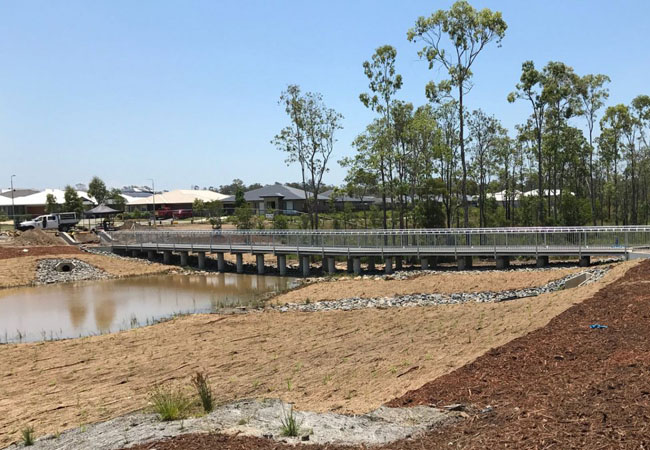
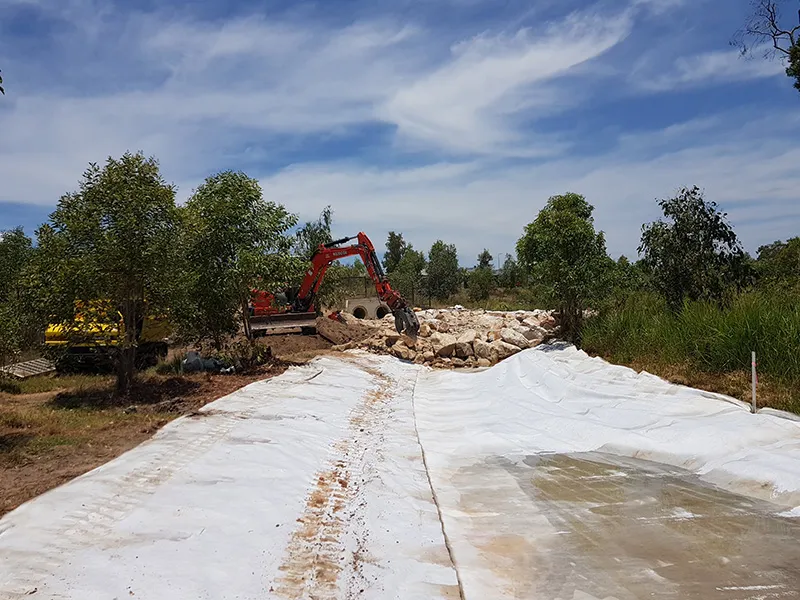
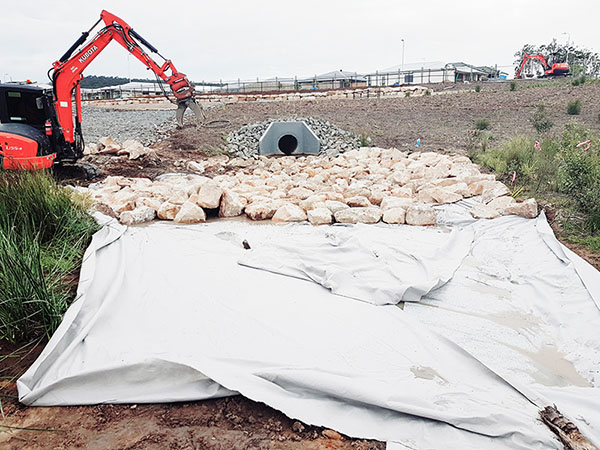
Bioretention Swale Treatment Processes
With these systems, the interaction between water flow and vegetation is what enables pollutants to settle and be retained by the vegetation. The type and height of the vegetation will influence the overall performance.
Low vegetation, such as mown grass, can achieve moderate sediment deposition rates if water flows are well distributed across the entire swale.
Swales with taller vegetation, like reeds, can offer better sediment retention by slowing down water flows more. They can also provide enhanced sedimentation for deeper flows. They do, however, have higher hydraulic roughness and require a much larger area compared to grass swales.
Bioswales & Vegetated Swales
Bioswales and drains are shallow yet open vegetated channels. They are used mainly for moving water through a drainage pathway. They can also be designed to manage water quality through slowing down the speed of water flow compared to piped, concrete or bare soil systems.
Often combined with buffer strips, sediment basins and constructed wetlands, bioswales can remove coarse and medium sized sediments. The design of swales and drains should be such that they are well vegetated and move the required run-off volume effectively to allow for seasonal slashing.
Swales and drains work differently and the main difference is in how they hold water. Swales are in areas which can fully drain and are more dry whereas drains are located on flat or back-watered sections which result in them holding water.
Rock-Lined Swales
Rock-lined swales are shallow trenches in a landscape that catch rainwater from roofs, driveways and other urban, hard surfaces. They are purposely designed to slow water down, spread it out and then let it sink into the ground during small storms.
A rock-lined swale is also considered to be like a dry creek bed. It uses rock instead of grass or other vegetation to safely infiltrate or manage runoff. Most rock-lined swales are designed with rounded rock on the surface to facilitate an aesthetically pleasing landscape feature.
These types of swales are very versatile and can be formed to fit almost all site conditions and interests from landowners. Depending on the space and landscape, swales can either be straight lined or they can meander.
The advantage of a meandering design is that it maxmises the amount of time water spends in the swale and thus aids infiltration by trapping sediments and pollutants.
Advantages and Disadvantages of Swales
Advantages
- Swales may be a less expensive option to install.
- Swales assist with the prevention of stormwater runoff discharge from the site.
- Aesthetics of a property may be enhanced with vegetated swales.
- Compared to other options that have no contact with the underlying soil, swales have a number of advantages for how they manage the flow of stormwater runoff.
Disadvantages
- Swales can convert sheet flow into channel flow, which can potentially increase flow velocity and erosive energy.
- Concentrates the volume of runoff.
- Bioswales are not practical on steeper slopes or when runoff velocities are high.
Developers: Receive your bond faster post-construction
As part of any new development in Brisbane, bioretention basin construction must be taken into account. With councils focusing on water sensitive urban designs, there’s no way around it for developers.
What’s more, the bond you pay in order to begin construction is returned upon a condition requiring the cleaning and maintenance of the bio basin affected by your development activities.
We can help you secure your bond faster. Our team has specialist equipment and knowledge on bioretention basin construction, cleaning and maintenance. We can help you get it all back into tip-top shape post-construction so you can secure the return of your development bond as soon as possible.
Studies have indicated that pollutant runoff increases substantially following the development of a site. Pollutants such as sediment, nutrients (primarily nitrogen and phosphorus), oil, grease and trace minerals are byproducts of development.
Bioretention areas are used to manage pollutant removal efficiency from development. That’s why designers can incorporate bioretention areas into the landscape to remove such pollutants from many sources. Contact us if you would like to get your development bond back as soon as possible.
We provide erosion control solutions throughout Queensland and NSW.
YEARS EXPERIENCE
Erosion Control & Land Rehabilitation Services
Erosion and sedimentation control are becoming ever more important considerations across environmental projects. Environmental service providers are faced with obligations to maintain the condition of the land through environmental rehabilitation measures.
Not only are you faced with compliance of legislation, the task of caring for the environment, waterways and the elements surrounding large earthworks can be difficult without access to specialist knowledge and equipment.
That’s where Total Environmental Concepts can help. We’re experts in our field with over 38 years of experience. We also have a large range of equipment that can assist on commercial projects.
From environmental compliance consultation to implementation, we can help. With our state of the art equipment and years of experience behind us, we offer clients the best in erosion control through soil profiling and land analysis with ultimate cost effectiveness.
For more information about how we can help, download our or contact us today.
Meet erosion control standards on your landscaping project
The needs of landscaping projects vary from location to location. Erosion control is a major factor that needs to be assessed at each location before work can begin.
While your team is likely able to implement some erosion control methods, like increasing vegetation, there may be other solutions needed on the project that you’ll need specialist equipment to complete.
That’s where Total Environmental Concepts can help. We have a range of equipment that can be hard to come by for working on commercial projects. Our equipment can reach areas that are hard to access and can also handle steeper slopes and difficult terrain.
For more information about how we can help, download our Capability Statement or contact us today.
Maintain Council land & meet erosion control standards in City Plans
Maintaining erosion control standards across development projects on council or government owned properties can be a big task. Our team are fully qualified to carry out implementation and maintenance of:
Erosion control;
Sedimentation control;
And sustainable land clearing & forestry mulching measures.
We can also assist in implementing standards outlined in city development plans by ensuring council standards are met on projects that disrupt the land or nearby environment. For more information, download our Capability Statement or contact us today.
Meet council regulations and avoid contaminating our waterways
Construction, building and development sites are a major concern when it comes to the stormwater management, pollution of our waterways and land protection from erosion. These sites are a major source of stormwater pollution and can be the cause of environmental problems both in the short and long term.
We can help you meet your obligation to your local council. Brisbane City Council, for example, requires property developers to abide by the Planning Act 2016. The development conditions outlined in the act require you to meet erosion and sediment control measures.
Our expert team can assist with the implementation and maintenance of these measures on site. We’ll ensure your construction zone passes any council inspections targeting water pollution and erosion or sediment control so that you don’t receive any hefty fines.
Contact us today for more information.
Why is erosion control necessary?
Revegetation and Erosion control is an essential strategy for the protection of our land and environmental sustainability. It helps us use land to its full capability while also protecting soil surface and controlling runoff before it becomes a force of erosion.
We have over 38 years of experience working with the following partners on commercial projects. We offer driver-operated hire of our tracked tippers, bobcat and excavator equipment. If you have a similar project, reach out to our friendly team to find out how we can help.
Erosion Control Solutions
Bioretention Basins
Bioretention basins are vegetated areas where runoff is filtered through a filter media layer (eg. sandy loam) as it percolates downwards. It is then collected via perforated under-drains filtering contaminants prior to entering downstream waterways or to store for reuse.
Rock Filter Dams
Rock filter dams effectively control silt and sedimentation in channels and high flow water areas. The stone embankment is designed to capture sediment in natural environments and helps to capture coarse particles of sediment.
Spillways
A spillway is a passage created to help channel surplus water from a dam. The spillway releases floodwater and assists to manage overflow without damaging the dam. The waters are released under control and into a downstream area safely.
Rock Retaining Walls
While an attractive addition to the property, rock retaining walls are designed to support land that has been levelled and prevent soil erosion. The engineered walls help to resist landslides and are used in development sites to provide support for vertical grade changes.
Batter Stabilisation
This erosion technique allows for the construction of a receding slope of wall or earthwork. Batter means to build the slope of a wall that recedes gradually backwards and upwards and this erosion technique helps to protect the property and land from erosion.
Gabion Baskets
These cages of mesh are made from steel wire mesh and are laced together and filled with rocks to provide a cost-effective solution to river works, soil stabilisation and flood protection. The baskets are popular with landscaping and property owners and are also used regularly for civil works.
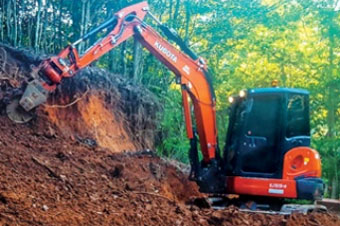
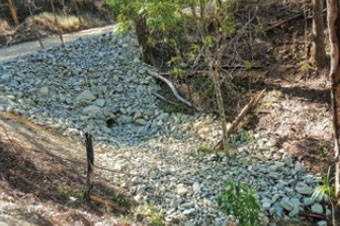
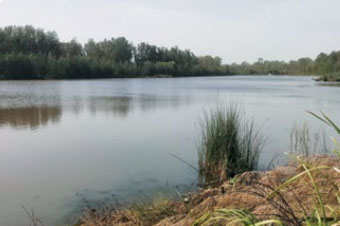
CONTACT
TOTAL ENVIRONMENTAL CONCEPTS
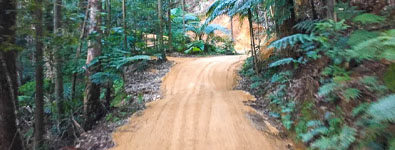
TRACK AND FIRE TRAIL CONSTRUCTION
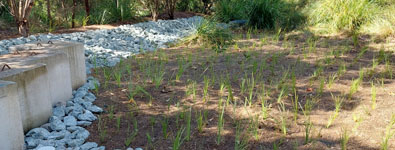
BIORETENTION BASIN MANAGEMENT
